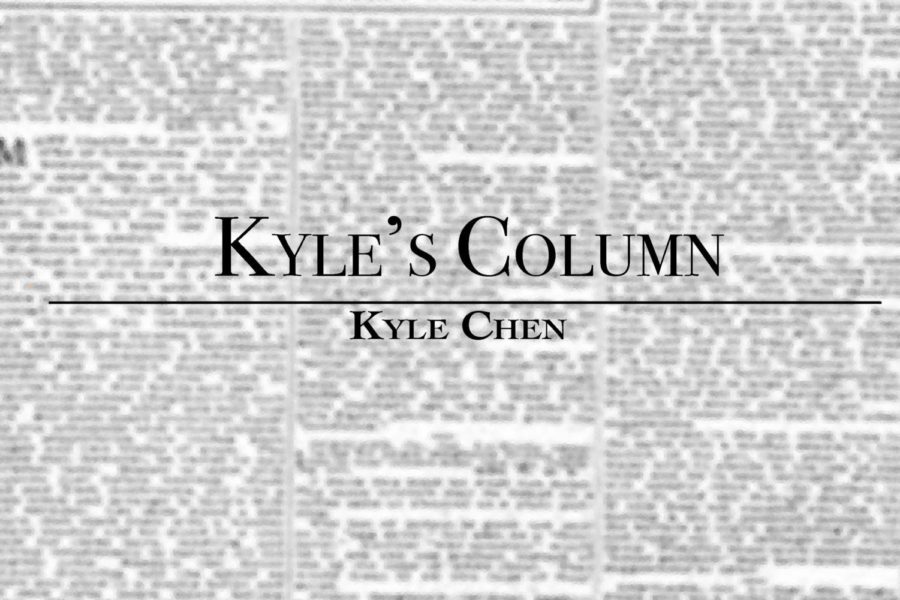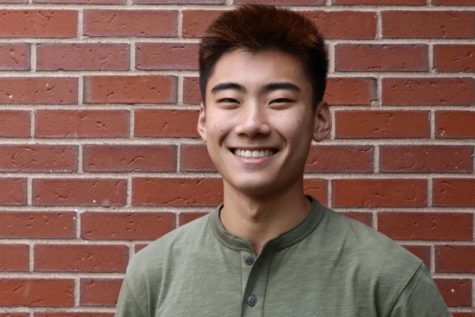Kyle’s Column: Chinese-American
Credit: WSPN Staff
In the latest installment of Kyle’s Column, Opinions Editor Kyle Chen ponders the potential of a “bilateral cultural identity,” one that acknowledges belonging in more than one ethnic group.
February 8, 2019
What’s your ethnicity?
Since I was a kid, I’ve always struggled to come up with a definite answer to that question. It’s come up quite a lot – especially when I was younger. When other kids saw me, they didn’t see an American – instead, they saw the “yellow” skin, black hair and slanted eyes that identified me as Chinese.
I was born in Stamford, Connecticut. Yet for some reason, whenever I said so in front of my classmates, they’d often give me a strange look of something suspiciously close to skepticism – one that said, “You don’t look like you’re from Connecticut.” Even at a young age, I remember the sick feeling I would get in my stomach every time I saw that look, a sting of self-doubt that penetrated deep into my very existence.
Now that I’m in high school, the questions of where I’m from or what my ethnicity is rarely come up anymore. People glance at my appearance and instantly categorize me as an Asian, subsuming any conceptions they might have into the broad folder of my race. They’re not wrong – both my parents immigrated to the U.S. from China, where much of my extended family still lives. There is no debate as to whether or not I belong to the ethnic group known as the Han Chinese.
Here, however, arises the paradox. All my life, I’ve been categorized as Chinese – by my friends and family, by classmates and teachers, even by the people I’ve walked past on the street. But I have never felt truly represented by such a label. Ever since I can remember, I have felt discontented with society’s designation of who I am.
Yes, I am Chinese, but I also feel a deep connection to my home country – the one in which I was born and raised, the one that has taught me the values I hold dear, the one that has made me who I am. I am just as American as I am Chinese – yet when people look at me, they seldom see the American half of my identity.
I have yet to meet someone whose first impression of me is that I am an American. More than nine times out of 10, the first label I receive falls more along the lines of “Asian,” or “Chinese.” Perhaps from time to time, the label “American” might pop up, but it is unfailingly dismissed, cast away by what meets the eye.
Unfortunately, this type of involuntary rejection is just an inevitable symptom of our time. Despite the fact that the first Chinese came to the U.S. about 200 years ago, the addition of Chinese culture to the great American melting pot has been a (relatively) recent one. The Chinese population in the U.S. hovered below 100,000 prior to the 1950s, and it wasn’t until then that immigration began to bolster those numbers. In 1970, the population had increased fourfold to around 400,000. By 2000, it had multiplied to over 2,400,000, and the 2010 U.S. Census puts the Chinese-American population at 3,500,000.
I’m a first-generation Chinese-American, meaning I’m a member of a population with roots in Chinese ethnic groups but was born in the U.S. Because of our mixed heritage, we are the bridge between Chinese and American cultures and we identify with both. Perhaps the fact that I truly have one foot in both worlds contributes to my struggle to reconcile the two. Yet by the same token, the novelty of a bilateral cultural identity may be the predominant factor contributing to its widespread rejection.
Despite large steps in the integration of Chinese culture into American society, the question of the acceptance of such an identity remains, for now, largely unanswered. Perhaps one day – whether that day is ten years down the road, generations from now or never to happen at all is a mystery. Ultimately, time will tell if an attitude that truly accepts a bilateral cultural heritage and acknowledges the possibility of membership in more than one ethnic group is meant to be.
In the meantime, if anyone asks, I am, and will always be, Chinese-American.
Opinion articles written by staff members represent their personal views. The opinions expressed do not necessarily represent WSPN as a publication.





![Last Wednesday, the Wayland School Committee gathered to discuss a number of topics regarding the health curriculum and Innovation Career Pathway course. Another large topic of conversation was the ways to potentially mitigate distracting cell phone usage. "These [phones] are going to distract your learning and social relationships," Superintendent David Fleishman said. "That's concrete right there."](https://waylandstudentpress.com/wp-content/uploads/2025/06/Screenshot-2025-06-04-at-9.49.31 PM-1200x886.png)



























![Troy Hoyt finishes the Boston Marathon, running for the Hoyt Foundation. T. Hoyt is the son of Hoyt Foundation CEO Russ Hoyt.
“[Running a marathon] might seem like a big thing, when it’s presented to you at first, but if you break it up and just keep telling yourself, “Yes, you can,” you can start chipping away at it. And before you know it, you’ll be running the whole 26 miles, and you won’t even think twice about it.” T. Hoyt said.](https://waylandstudentpress.com/wp-content/uploads/2025/04/C36E8761-1CBB-452E-9DF2-543EF7B1095E_1_105_c.jpeg)














































kchenni • Feb 9, 2019 at 2:03 PM
CHINA NUMBER ONE